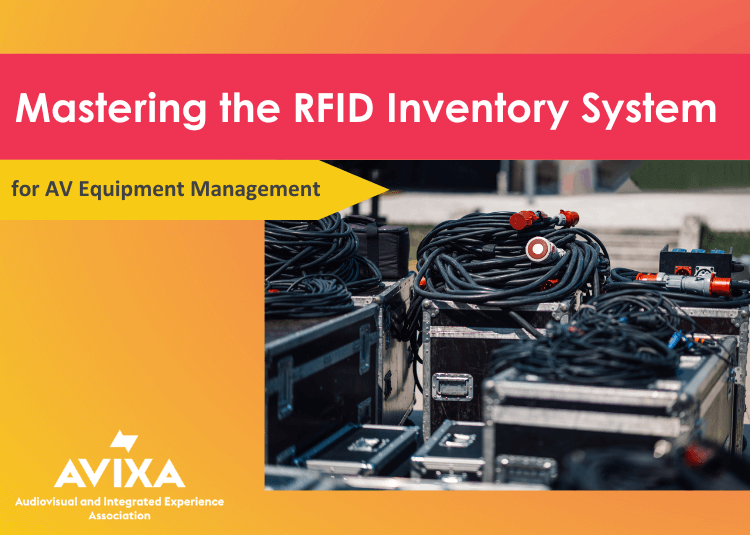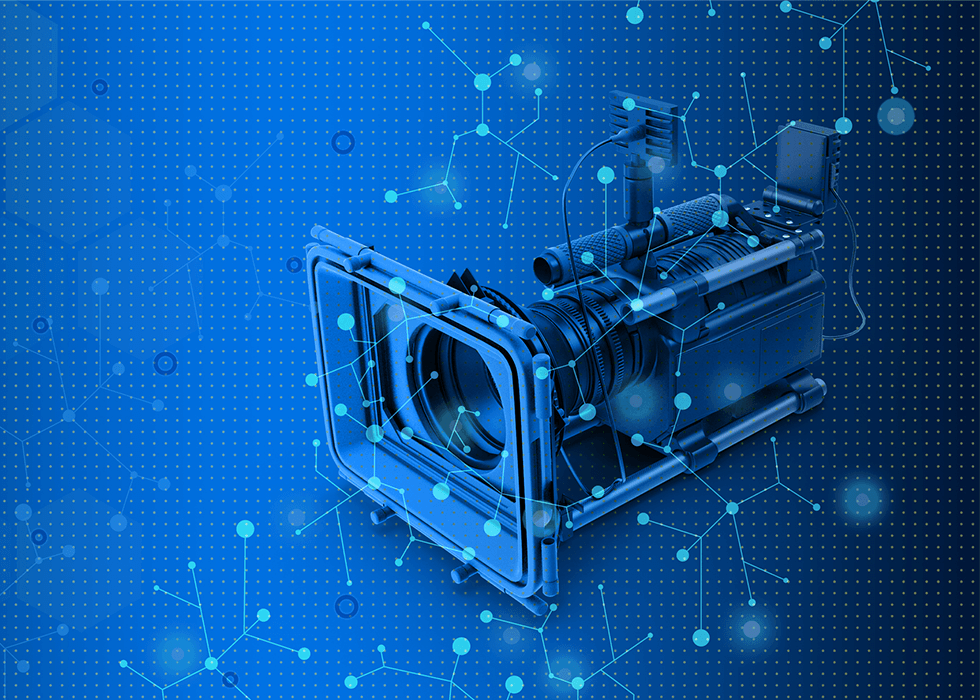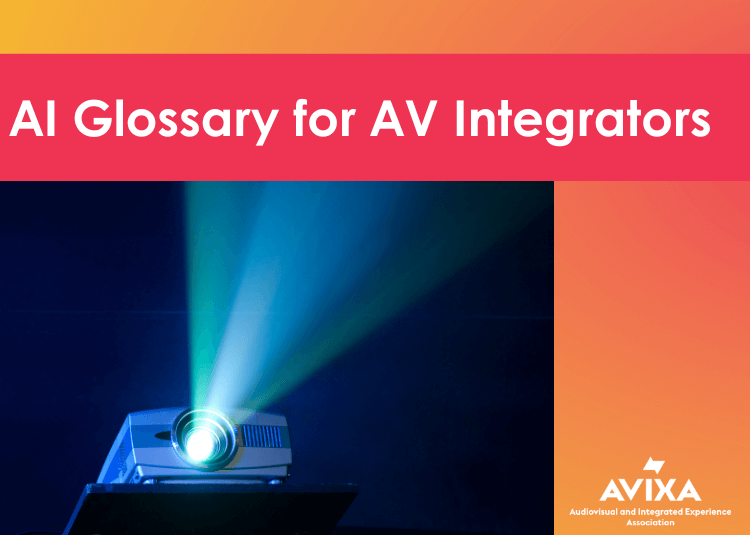How Might We Support Human Connection in Virtual Places?
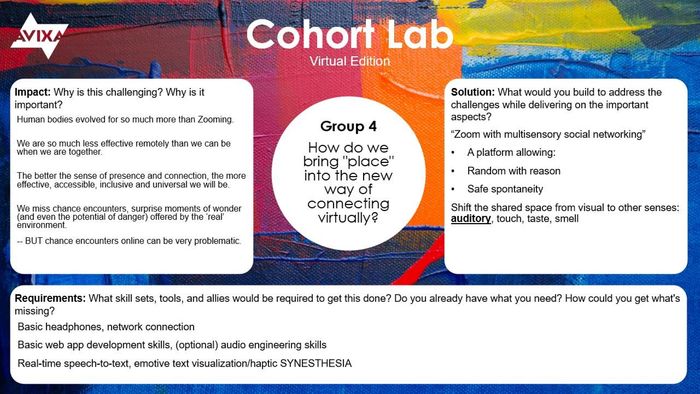
So many new experiences since March 2020.
A few months ago, I had never watched a live broadcast of a performance on social media.
I had never joined my far-flung friends for an online virtual lunch date.
I had never ‘gone out’ for virtual cocktails with my co-workers while sitting in my own upstairs hallway to prevent my kids from sneaking out of their beds.
I’m betting, like me, you’ve been doing exponentially more virtual socializing and networking over the past few months. And I must admit that, even against the current backdrop of uncertainty, it’s been fun. I keep wondering aloud, “Why haven’t I been doing this for years?”
Under normal circumstances, virtual and in-person spaces provide different, complementary modes of interaction. Circumstances now are anything but normal. When we’re entirely deprived of real-world connection, we’re missing something vital – the ability to surprise one another, make deep connections with new people, and share experiences with a community. The AV industry is uniquely skilled and equipped to help provide virtual solutions to these needs.
Interacting virtually is not inherently bad – but it is different. There is a reason that pre-COVID, people largely preferred to gather in person even though it’s more expensive, less convenient, riskier, and less predictable. In April, AVIXA convened its first virtual Cohort Lab to explore why humans are so driven to gather in person, and how we can leverage technology to respond to those needs.
What’s a Cohort Lab?
AVIXA’s Cohort Labs are creative visioning and problem-solving workshops. Each lab convenes a group of artists, architects, interactive experience designers, XR developers, immersive audio creators, projection mapping artists, large-scale audio and video systems engineers, and those who integrate these sensory elements into the built environment for the purpose of exploring and proposing a solution to a problem.
Past Cohort Labs have been in-person and very future-focused, exploring issues like how technology might evolve from artificial intelligence to artificial life, or how interactive activations can leverage real-time generative technologies to be truly human-centric. Cohort Lab Virtual Edition was focused on our alien now: A team of experience designers, artists, integrators, engineers, and other creatives gathered to answer the question “As we strive to have meaningful small-group connections in an age where we can't be together, how do we bring ‘place’ into this new way of connecting?”

The cohort worked in four groups to ponder and respond to the questions you see on each slide:
- Impact — Why is this question challenging? Why is it important?
- Solutions — What would you build to address the challenges while delivering on the important aspects?
- Requirements — What skill sets, tools, and allies would be required to get this done? Do you already have what you need? How could you get what's missing?
At the end of the lab, the teams presented four distinct solutions. As disparate as these approaches are, there are some striking common threads:
- We must find a way to allow spontaneity in virtual spaces
The overwhelming majority of interaction in virtual spaces is planned. We attend scheduled videoconference meetings or webinars; we set times to chat with friends and colleagues; we search for and consume livestreamed entertainment. It’s impossible to “accidentally bump into someone”. Where interaction with strangers does occur in virtual spaces, it’s often more performative than spontaneous. There’s no real replacement for the “safe risk” of interaction in a physical space; the controlled nature of even the best virtual interaction makes it very difficult to make new interpersonal connections of any depth online. One of the most important goals of creating virtual place should be to support natural, spontaneous connection so that true community can grow.
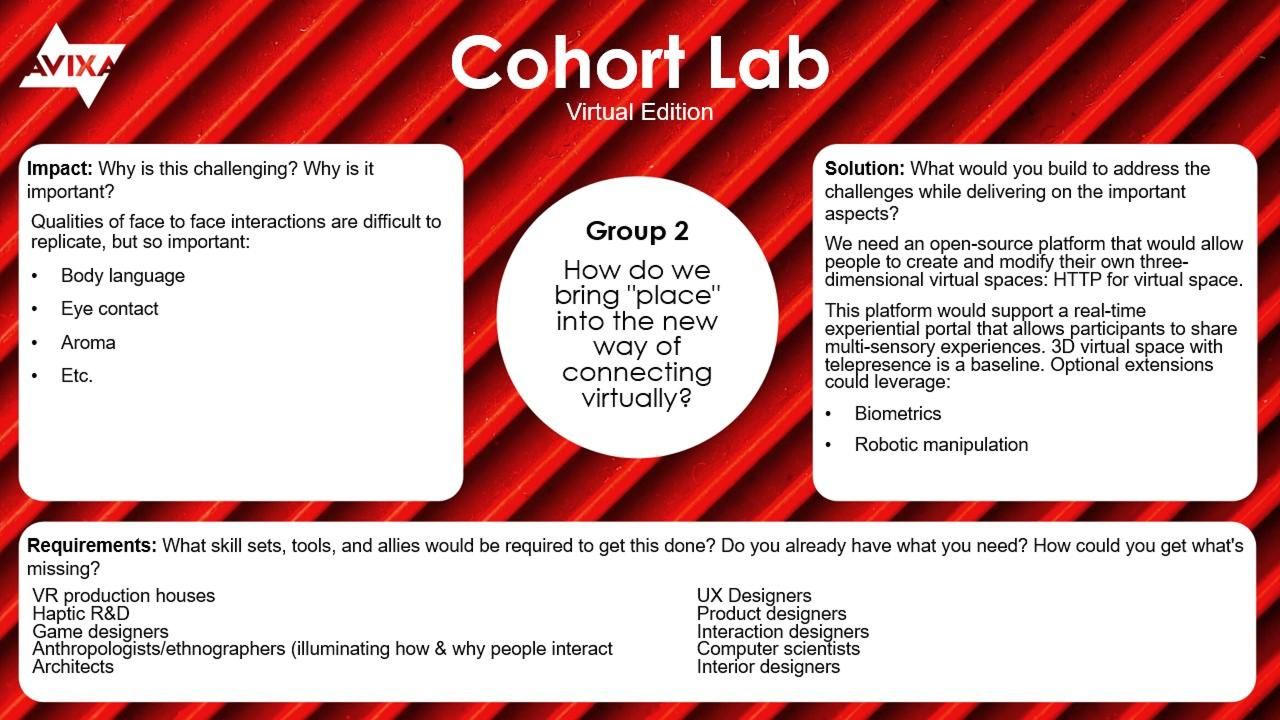
- Without real-world context, it can be difficult to identify your community
Part of the reason it’s so hard to build new, in-depth connections in virtual space is that we’re deprived of all the subtle clues that help us identify affinity in the real world. Say you go to a trade show. You might notice that someone is interested in many of the same products as you. They’re wearing a David Bowie tee shirt. You have an Iggy Pop tattoo. You would know, without exchanging any words, that the two of you would likely get along. Virtual space makes it harder to accommodate this subtext. At best, it allows people to present two-dimensional portraits containing information that they consciously choose to make public. In certain contexts, this can be freeing. You shouldn’t have to know my music preferences — or my age, race, or gender — to respect my technical expertise. Without any context clues, though, interaction may be challenged beyond the most superficial levels. A successful virtual “place” would make it easy to recognize and connect community.

- Multi-sensory immersion can enhance a sense of shared “place”
The current state of virtual interaction is reliant on video to foster connections – but humans are multi-sensory. Given that nearly everything from toys to loudspeakers to lightbulbs is IP-addressable these days, we have an opportunity to leverage people’s physical environments to build virtual space. Experiential products such as synchronized lighting, immersive audio effects, haptic systems, and even scent diffusers could all be deployed to create shared experiences that engage our whole bodies. Immersive audio may be the most broadly accessible to start with, but the basic technology for any of these effects already exists: It’s a matter of determining how to purposefully deploy them together effectively, accessibly, and in a scalable manner.
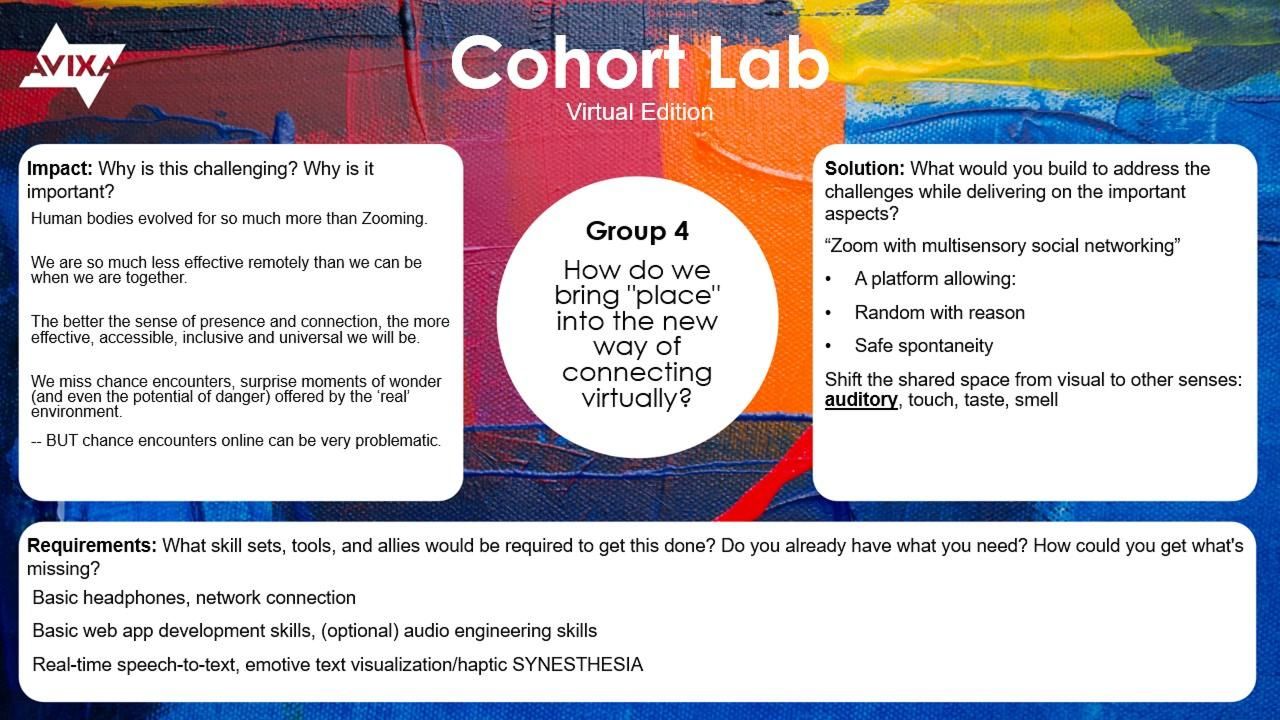
The Cohort Lab isn’t stopping: We’re convening virtually again in May to test some prototypes of the solutions proposed here. This industry exists to connect people, and it has never been more vital. Interested in attending the next one? Email Rachel Bradshaw at [email protected] to get on the list.
Read Next: Creating a Cohort
Have you ever had friends whose worth and brilliance are obvious to you, but not to each other?



